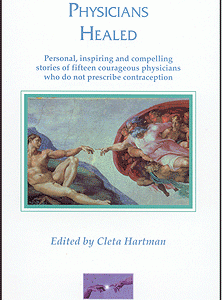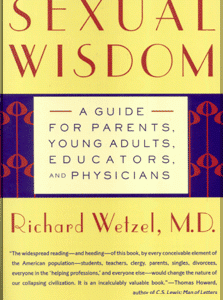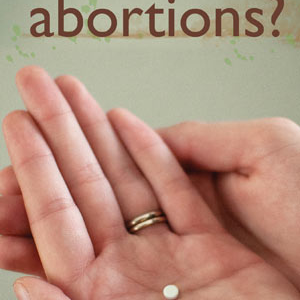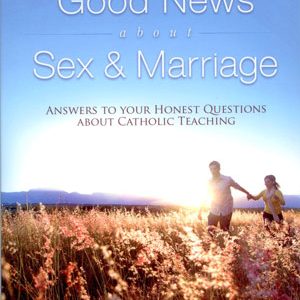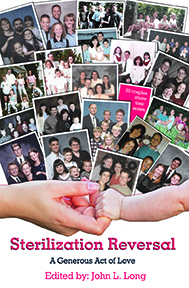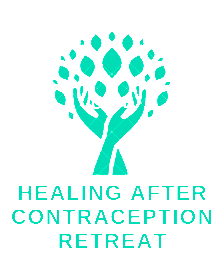How could abortion cause breast cancer?
At the beginning of pregnancy there are great increases in certain hormone levels (e.g., estrogen, progesterone, and hCG) that support pregnancy. In response to these changes, breast cells divide and mature into cells able to produce milk. Abortion causes an abrupt fall in hormone levels, leaving the breast cells in an immature state. These immature cells can more easily become cancer cells.1
Has this been proven?
Yes. Of 73 studies worldwide since 1957, 53 showed that women who experienced an induced abortion had an increased risk of breast cancer.2 In 1996 Joel Brind, PhD3, assembled the results of all the studies up to that time. Brind concluded that women who have an abortion before their first full-term pregnancy have a 50% increased risk of developing breast cancer while those who have an abortion after their first full-term pregnancy have a 30% increased risk.
What does it mean to have “a 50% increased risk of developing breast cancer?”
A 50% increased risk means a 50% higher risk than someone would have otherwise. For example, if a person already had a 10% risk of developing breast cancer, then a 50% increase would bring the risk up to 15%.
How serious a problem is breast cancer?
Breast cancer is the worldwide leading cancer in women and is the most common cause of cancer death for U.S. women age 20 to 59. In the U.S. in the year 2011, 220,097 women were diagnosed with breast cancer and 40,931 women died from this disease.4 About one U.S. woman out of eight will develop breast cancer at some time in her life and about one fourth of such women will die from this disease. Induced abortion, especially at a young age, markedly increases a woman’s risk for developing breast cancer. This risk is increased even further by other breast cancer risk factors such as synthetic hormones (including hormonal contraceptives like the birth control pill, Norplant and Depo-Provera), family history of breast cancer, and others.5
The U.S. has one of the highest rates of induced abortion and hormonal contraceptive use in the world, especially for young women. The breast cancer rate in the U.S. is rising, and will likely rise even higher once the latent period (the time it takes for cancer to develop) for these women has passed.
Calculations based on available studies indicate that induced abortion may result in over 46,800 additional cases of breast cancer in the U.S. annually.
Are some groups of women in greater danger?
Yes. Research shows that induced abortion increases the risk of breast cancer more for some groups of women than for others. Black women under 45 years, for example, have higher rates of breast cancer and tend to develop more aggressive cancers. There is also a greater risk in women who have had abortions if they were under age 18 at the time, if they do not have any more children after aborting, or if they have a family history of breast cancer.
Why would black women have more breast cancer?
Breast cancer in the U.S. is more prevalent in young black women than in white women of equivalent age, and is the second leading cause of cancer death (after lung cancer) among black women. This may be a consequence of more common hormonal contraceptive use and/or a greater frequency of abortion among young black women. Black women who develop breast cancer generally have more aggressive cancers resulting in a shortened life expectancy.
What is the risk for young women?
Janet Daling noted in 19946 that women younger than 18 who had an abortion experienced a 150% increased risk of developing breast cancer. This became an 800% increased risk if they had their abortions between the 9th and 24th week of pregnancy.
What if there has been breast cancer in my family?
Women who have a family history of breast cancer and choose to have an abortion are at very high risk of developing breast cancer. Andrieu et al (1994)7 found that women who had a family history of breast cancer and had two or more induced abortions had a 600% increased risk of breast cancer as compared to the rest of the population. Daling et al (1994)6 noted that women who had an abortion prior to age 18 and had a positive family history of breast cancer had an infinitely increased risk of developing breast cancer compared to young women who had a family history of breast cancer and had not had an abortion. She also noted that women who were 30 or older at the time of their abortion and had breast cancer in their family history had a 270% increased risk.
But isn’t pregnancy and childbirth more dangerous than abortion?
No. The risk of breast cancer is increased by abortion; suicide risk is much higher after an abortion; and risk of ovarian cancer is decreased after a full-term pregnancy. Because of changes in these three risk factors, abortion is many times more hazardous in the long-run than carrying a child to term.
How can I protect myself?
Many of the known risk factors for breast cancer can be avoided: hormone exposure (including hormonal contraceptives), induced abortion, heavy alcohol use, obesity, and radiation exposure. In addition, there is a significant reduction of risk with each child a woman bears. Every month of breastfeeding reduces breast cancer risk, as does bearing a child at a younger age. Vitamins A and D8 and some commercial medications may offer some protection. Any woman, especially if she has one or more of the known risk factors, should consult a physician regularly and perform frequent self-breast exams.
If abortion and chemical contraceptives are so dangerous, what options do couples have?
Natural Family Planning (NFP) methods are available which use no chemicals or surgery and cause no increase in breast cancer risk. Not to be confused with the “rhythm method,” NFP is based on observations of a woman’s cervical mucus and (for some methods) other symptoms as well. One of the largest research studies of NFP (involving 19,843 women and performed in India by the World Health Organization) showed a pregnancy rate of 0.2 pregnancies per 100 women yearly.9
Natural Family Planning methods have been used to diagnose and treat a variety of female reproductive system disorders including infertility. Various medical problems (e.g., excessive menstrual cramping and bleeding) can be treated far more safely with less toxic means (e.g., magnesium/calcium supplements and/or ibuprofen products).
If a woman develops breast cancer during pregnancy, should she abort the baby?
Definitely not. A woman diagnosed with breast cancer while pregnant has a significantly longer life expectancy if she gives birth rather than aborting. Clarck and Chua (1989)10 found that of the women in their study who had breast cancer while pregnant and had an abortion, none were alive after 11 years, while 20% of the women who had breast cancer and chose to deliver their babies were alive at 20 years.
How can I find out more about breast cancer risk from abortion?
The book Breast Cancer, Its Link to Abortion and the Birth Control Pill by Chris Kahlenborn, MD, is available from One More Soul. Four of the seventeen chapters in this book deal with cancer risks from abortion. It contains an extensive bibliography of over 500 references on this and related topics. The material in this pamphlet is based upon Dr. Kahlenborn’s book.
References
1. Lanfranchi A. Normal breast physiology: the reasons hormonal contraceptives and induced abortion increase breast-cancer risk. Issues Law Med. 2014 Spring; 29(1): 135-146.
2. Epidemiologic Studies: Induced Abortion and Breast Cancer Risk, retrieved from http://www.bcpinstitute.org/PDF/BCPI-FactSheet-Epidemiol-studies_11_2013.pdf December 9 2014.
3. Brind J, Chinchilli M, et al. Induced abortion as an independent risk factor for breast cancer: a comprehensive review and meta-analysis. J Epidemiol Community Health. 10/ 1996; 50: 481-496.
4. U.S. Cancer Statistics Working Group. United States Cancer Statistics: 1999–2011 Incidence and Mortality Web-based Report. Atlanta (GA): Department of Health and Human Services, Centers for Disease Control and Prevention, and National Cancer Institute; 2014.
5. Yankaskas BC. Epidemiology of breast cancer in young women. Breast Dis. 2005-2006; 23: 3-8.
6. Daling J, Malone K, et al. Risk of breast cancer among young women: relationship to induced abortion. JNCI. 1994; 86: 1584-1592.
7. Andrieu N, et al. Familial risk of breast cancer and abortion. Cancer Detection and Prevention. 1994; 18: 51-55.
8. Ordonez Mena JM, Brenner H. Vitamin D and cancer: an overview on epidemiological studies. Adv Exp Med Biol. 2014; 810: 17-32.
9. Ryder RE. “Natural Family Planning”: Effective birth control supported by the Catholic Church. Br Med J. 1993; 307: 723-726.
10. Clarck RM, Chua T. Breast cancer and pregnancy: the ultimate challenge. Clinical Oncology. 1989; 1: 11-18.
Dr. Chris Kahlenborn is an internist in private practice in Altoona, PA. Dr. Kahlenborn is the author of Dr. Kahlenborn is the author of Breast Cancer, Its Link to Abortion and the Birth Control Pill on which this pamphlet is based.
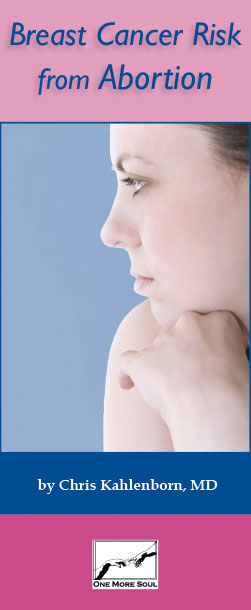
Breast Cancer Risk from Abortion
Information from the book Breast Cancer, Its Link to Abortion and the Birth Control Pill, in a short and highly persuasive format.
